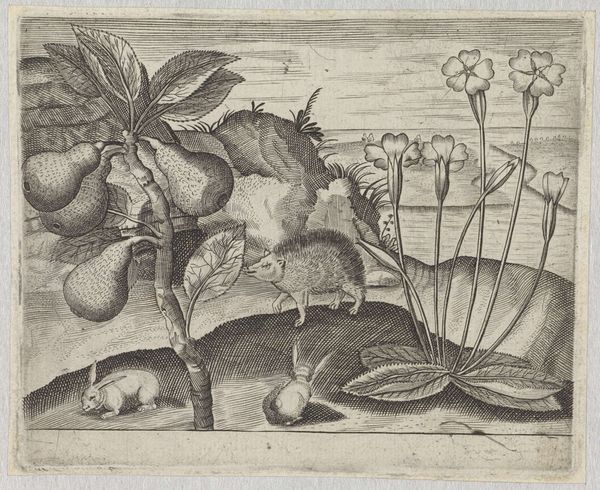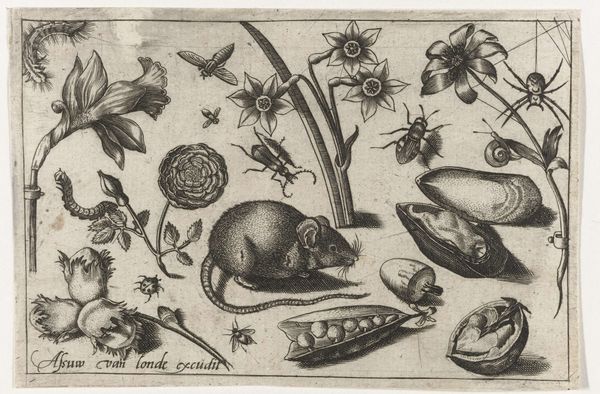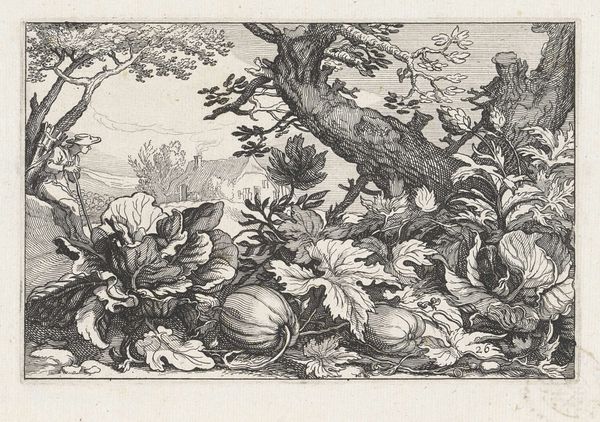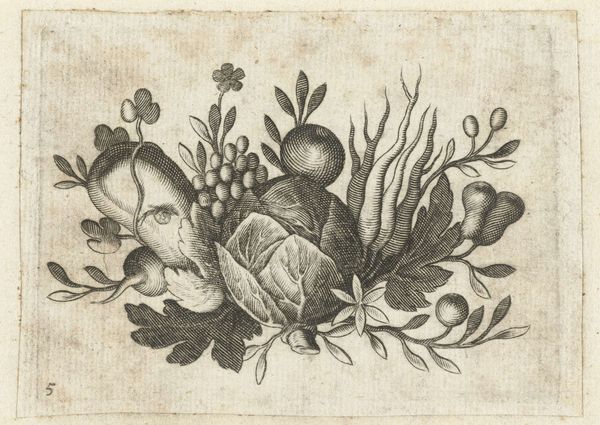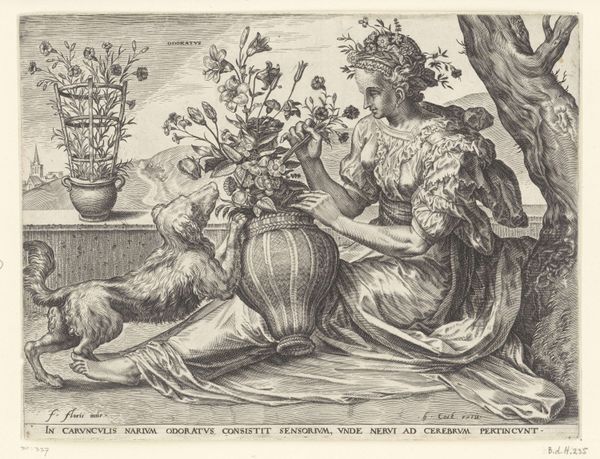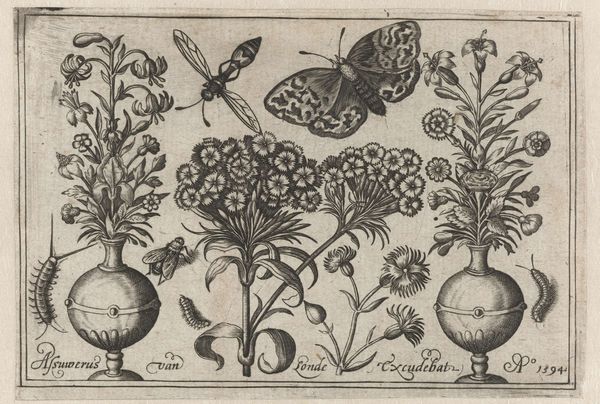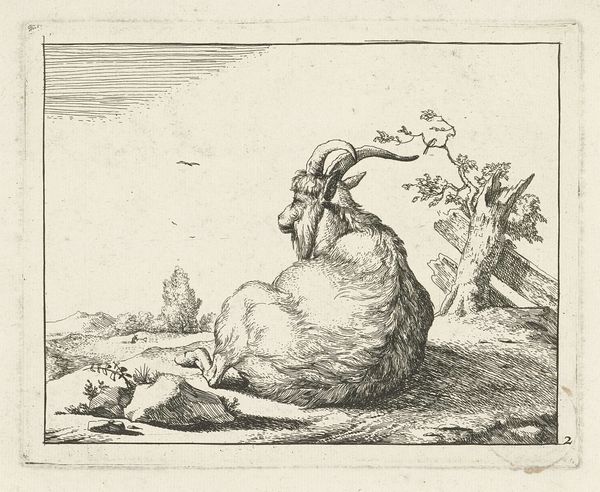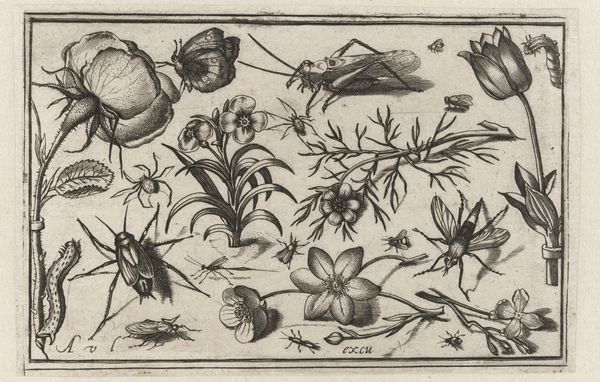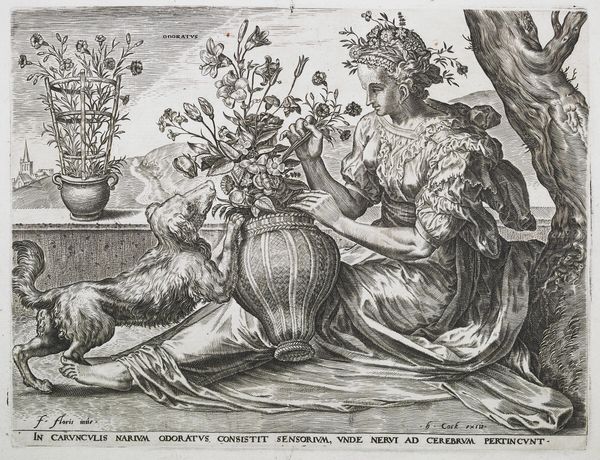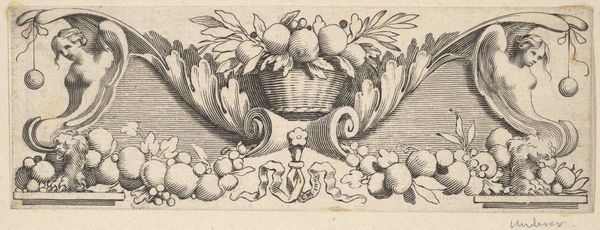
print, engraving
# print
#
landscape
#
flower
#
figuration
#
sketchbook drawing
#
history-painting
#
northern-renaissance
#
engraving
Dimensions: height 90 mm, width 124 mm
Copyright: Rijks Museum: Open Domain
Around the turn of the 17th century, Johann Hogenberg created this print using etching, a process that democratized image-making. To make an etching, a metal plate is coated with a waxy ground. The artist scratches an image into this surface, exposing the metal beneath. When the plate is submerged in acid, the exposed lines are eaten away, creating grooves. Ink is then applied to the plate, filling these grooves. Finally, the surface is wiped clean, and the image is transferred to paper under pressure. The lines in Hogenberg’s print, describing flora and fauna, are incredibly precise. Look closely at the textures he evokes – the fur of the deer, the segmented surface of the gourds, and the layered petals of the flowers. Etching allowed for the relatively easy reproduction of images, driving a boom in printed material and influencing the dissemination of knowledge at the time. This print reflects an increased interest in the natural world, made newly accessible through this technology. It is a reminder that artistic innovation is often entwined with technological advancement and shifts in social values.
Comments
rijksmuseum about 2 years ago
⋮
In making his representations of flowers and animals Hogenberg borrowed freely from prints by other artists. Some combinations are endearing, others slightly bizarre. What does a polar bear have to do with artichokes? It is precisely the series’ mixture of originality and naiveté that is so appealing to modern eyes.
Join the conversation
Join millions of artists and users on Artera today and experience the ultimate creative platform.
